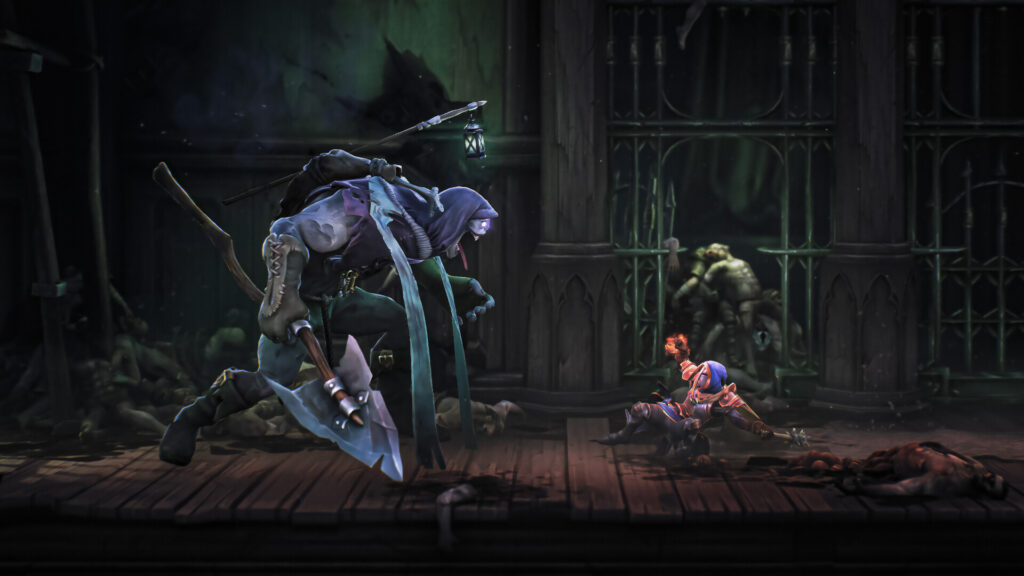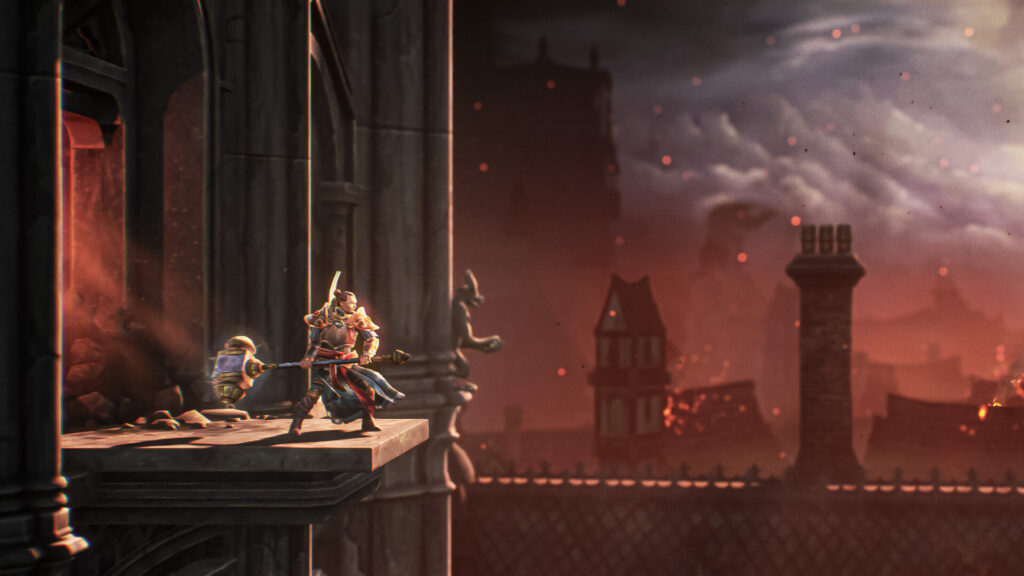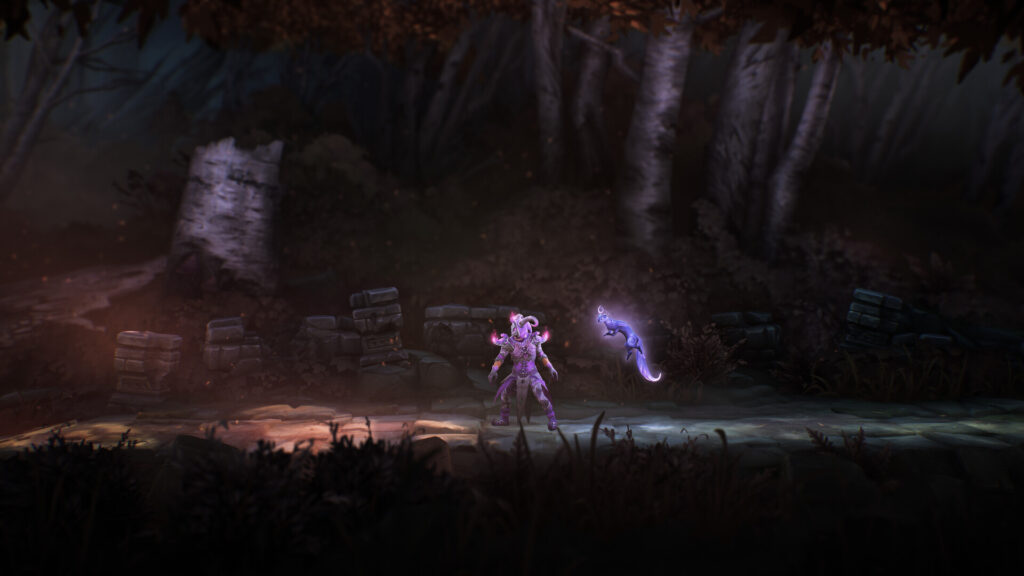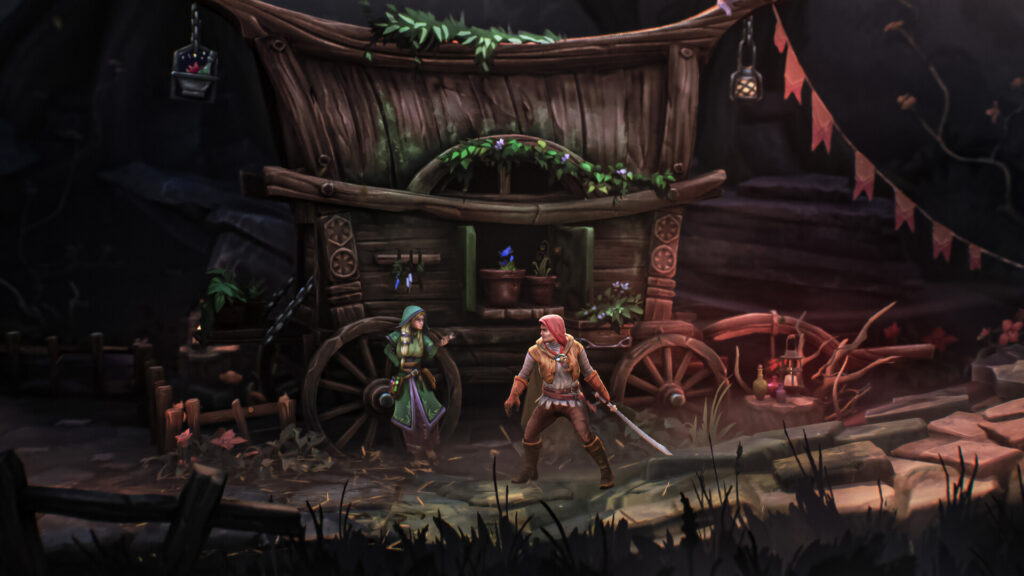Mandragora has been on my radar since they launched Kickstarter in 2022! And it turned out great. I fell in love with the arttyle and premise, which is hard in the ever-evolving landscape of action RPGs. The end product, now called Mandragora: Whispers of the Witch Tree, emerges as a compelling blend of Soulslike intensity and Metroidvania exploration. Developed by Primal Game Studio and published by Knights Peak, this title invites you into the haunting world of Faelduum—a realm where magic is outlawed, and darkness seeps into every corner. Ready? Time to dive in.
Narrative Depth and Player Choice
Brian Mitsoda, known for his work on Vampire: The Masquerade—Bloodlines, wrote the story of Mandragora, resulting in a rich and branching narrative. The moral ambiguity throughout the story encourages players to reflect on their choices, adding depth to the dark fantasy setting. Faelduum is a grim and vivid world full of unforgettable NPCs, unique enemies, and complex moral dilemmas. You’ll encounter horrific monsters and terrifying creatures as you explore various vibrant locations, from fearful villages to shadowy forests, biting-cold mountains to murky swamps. Face the devastating effects of entropy as you journey through this world that is in decline. Explore the mysterious dark halls of Braer Castle, speak to terrified residents of the crumbling Crimson City, befriend skilled artisans, face deadly enemies, and make harsh moral choices that will shape the future of this world.
There are many sides to every story, and multiple endings to every great tale told… How will your journey end? Luckily, you are not alone on the road. During your adventures, you’ll encounter seven skilled Artisans who can join your Caravan and travel with you on your journey. They can also level up when you craft items, consumables, or enchants with them. You’ll also be able to find new diagrams that they can learn and craft for you.
Exploration and Progression
True to its Metroidvania roots, Mandragora emphasizes exploration. Players will traverse rich and diverse locations—from swampy mires to decaying castles—each filled with secrets, collectibles, and formidable foes. For those familiar with games like Salt & Sanctuary and Blasphemous, these areas will never feel out of place. But it’s not all about running around; Mandragora features 10 main quests, 35 optional quests, and 15 bounty quests, providing lots of content for those eager to delve into every nook and cranny – and yes, you can pet the cats.
The progression system is robust, with many equipment options, including over 350 wearable items and 114 weapons. Crafting and upgrading gear is essential, as enemies respawn upon resting. This allows players to farm resources and strengthen their character before tackling more challenging areas. And you need to farm a lot since beating the endgame boss can be challenging without making additional upgrades to the people in your Caravan and yourself.
Combat & Classes
Combat in Mandragora is very Souls-like, so that means it’s hard to master and punishing at the same time. You must master dodging, parrying, and timed attacks, all while managing a stamina bar that depletes with each action. The game offers six distinct classes—Vanguard, Spellbinder, Nightshade, Flameweaver, Wyldwarden, and Vindicator—each with unique abilities and playstyles. The extensive talent tree, boasting over 200 active skill upgrades, allows for deep customization and encourages experimentation. For this review, I did two runs, with both the Nightshade, which is a dagger-focused class with poison skills, and the Vanguard, which is more of a tanky two-hander with a wide range of bleed and berserker options. The other playable classes feature fire, wild, chaos, and light magic class focuses, each with their own playstyle, pros, and cons.
A World Shrouded in Entropy
From the outset, Mandragora captivates with its richly detailed 2.5D environments. The straight-out-of-a-painting art style, combined with a haunting soundtrack composed by Christos Antoniou and performed by the FILMharmonic Orchestra of Prague, sets a melancholic tone that finishes the entire experience. As an Inquisitor turned defector, players navigate a world teetering on the brink of collapse, making choices that influence the narrative’s direction and outcome. While Mandragora excels in many areas, it’s not without its flaws. Initially, many players reported performance issues, including input delays and inconsistent hitboxes. The game’s map system has also been criticized for lacking clarity, hindering navigation and exploration. I have not found such problems, since it’s a Souls-like Metroidvania, and those are meant to be challenging and all about exploration. My main problem with the game is the number of upgrades and farming needed to finish the endgame bosses. Even around level 90 I still felt squishy with some enemies, while I could 1HKO others without blinking. It might be my equipment and build, but still. Luckily, the developers of this game are very supportive in terms of feedback, and they are patching and tweaking their game accordingly, so maybe I’ll do another run in a few weeks when another major patch happens.
Conclusion
Mandragora: Whispers of the Witch Tree is a commendable addition to the action RPG genre, offering a challenging yet rewarding experience. Its atmospheric world, intricate combat system, and branching narrative make it a standout title for fans of dark fantasy adventures. While it has areas that could benefit from further refinement, the game’s strengths far outweigh its shortcomings. Mandragora is a journey worth undertaking for those seeking a game that challenges skill and morality.





